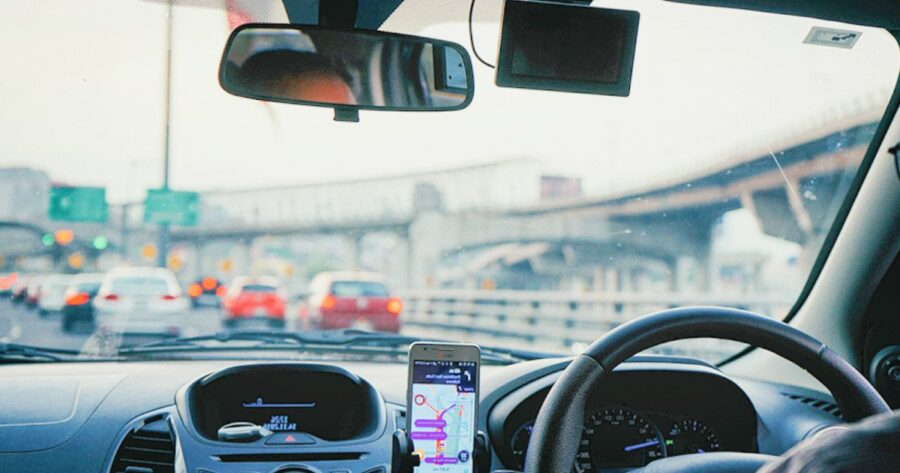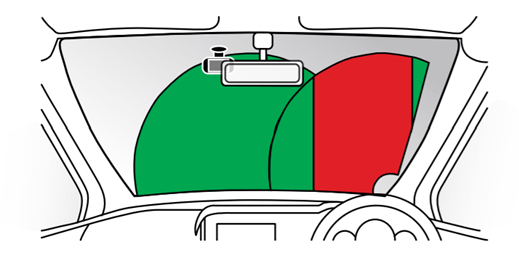
Avoid Breaking the Law When Using a Dash Cam
Research shows that dash cams improve safety on the road for everyone. Not only do dash cams protect drivers, passengers and road users, but they also help firms track driver behaviour and allow insurance premiums to be more fair and accurate.
However, using dash cams incorrectly could lead to heavy penalties. Private Hire drivers must be aware of the correct procedures for implementation. Otherwise, you risk breaking the law and being hit with a fine.
Keep reading to understand:
- Where to place your dash cam
- How to comply with the law
- What you need to know about your local authority’s rules
- Whether or not you need a dash cam
Are dash cams legal in the UK?
Dash cams are completely legal to buy, install and use on public roads. All Private Hire drivers are free to use them in their vehicle, but there are some restrictions.
You should:
- Install your dash cam in a position that doesn’t obstruct the view when driving
- Inform all passengers that the dash cam is installed and is recording
- Not tamper with or manipulate dash cam footage
Get dash cam placement right
Failing to correctly position your dash cam is a serious traffic offence. Any internal or external view cameras must comply with The Road Vehicles (Construction and Use) Regulations, as well as MOT guidelines.
The rules describe areas or “zones” of the windscreen as being out of bounds when it comes to the placement of devices such as cameras.
Windscreen zones:
- Zone A – this is a 290mm area around the steering wheel (or 350mm in goods vehicles over 3.5 tonnes GVW)
- Zone B – this is the “swept area” that is covered by the windscreen wipers when they are active
Legal dash cams should be:
- No more than 10mm into Zone A
- No more than 40mm into Zone B
The image below from Nextbase helps to illustrate this.

Source: Nextbase
Nextbase state:
“The red zone represents obstructing the drivers view of the road – DO NOT POSITION HERE. The green area shows the surface area the windscreen wipers clean – vital it is placed within this area otherwise dirt on the windscreen could obscure the view of the Dash Cam. A 40mm intrusion into the green wiped area is the maximum permitted by UK law.”
These rules ensure safety while driving and also aim to protect passenger safety in the event of a collision.
Brush up on GDPR and data protection
Chris Salmon, Director of Quittance.co.uk said, “data protection regulations such as ICO rules and GDPR can be tricky to navigate. Any recording device that captures personal data must be used in compliance with the regulations.”
“The problem is that ‘personal data’ is a broad term. On the road, this term can mean anything from audio recordings of in-car conversations to video footage of number plates. To comply with GDPR, cameras must have a legitimate reason for being used.”
Any personal data captured on dash cams should also be managed responsibly. This means Private Hire drivers need to:
- Ensure data is encrypted and stored securely
- Delete personal data after 28 days (unless it is required for a police or insurance investigation)
- Have a protocol in place so you can access the footage (and only when appropriate)
Check the rules with local authorities
What makes the use of dash cams even more confusing in the UK is that rules may differ depending on where in the country the cameras are being used.
Some local authorities make it a requirement for taxi companies to install continuous recording dash cams in their vehicles. Other councils say it’s voluntary, leaving it up to drivers and employers to decide whether they wish to use the technology.
If you provide a nationwide service, check the rules regularly. Your use of cameras must comply with the rules of all the local authorities you operate in.
Some councils have approved camera models for taxi and Private Hire drivers. Transport for London has an approved list of camera devices, which is a good starting point if your local authority doesn’t have a list.
Advice for UK Private Hire drivers
Dash cams have many benefits, but whether their use is justified in data protection terms will depend on your reasons for using them.
If there is a less “invasive” solution available that fulfils your requirements, that option should be used instead. For instance, if you want to monitor drivers’ speed, telematics devices work just as well and reduce the risk of data breaches.
Here are some tips for staying on the right side of the law:
1. Register with the ICO
Dash cams for work purposes may need to be registered and a fee may apply (unless you’re exempt). Use the ICO online checker to see if you need to take action.
2. Have security measures in place
Make sure cameras are installed securely to prevent theft. Loss of the footage stored on a camera would constitute a serious breach of data protection.
3. Write clear policies for drivers
Put policies in place and provide training for employees to ensure responsible dash cam usage.
4. Notify passengers when recording
Use signage and/or give verbal notice when the camera is turned on. Any signs should include information about the data controller and their contact details. If dash camera use is required by the local authority, the local authority will usually be the data controller.
5. Check your devices
Footage should be reviewed on an occasional basis and cameras should be maintained to make sure they are working and fit for purpose.
6. Report all data breaches
Any data breaches, such as lost or stolen camera footage, must be reported to the ICO within 72 hours. Passengers must also be notified (where possible) if their personal data has been compromised by the breach.
Please note, this blog has been written by a guest author. INSHUR accepts no liability of the accuracy of this information and guidance and we recommend that you do your own research to remain lawful and compliant.






